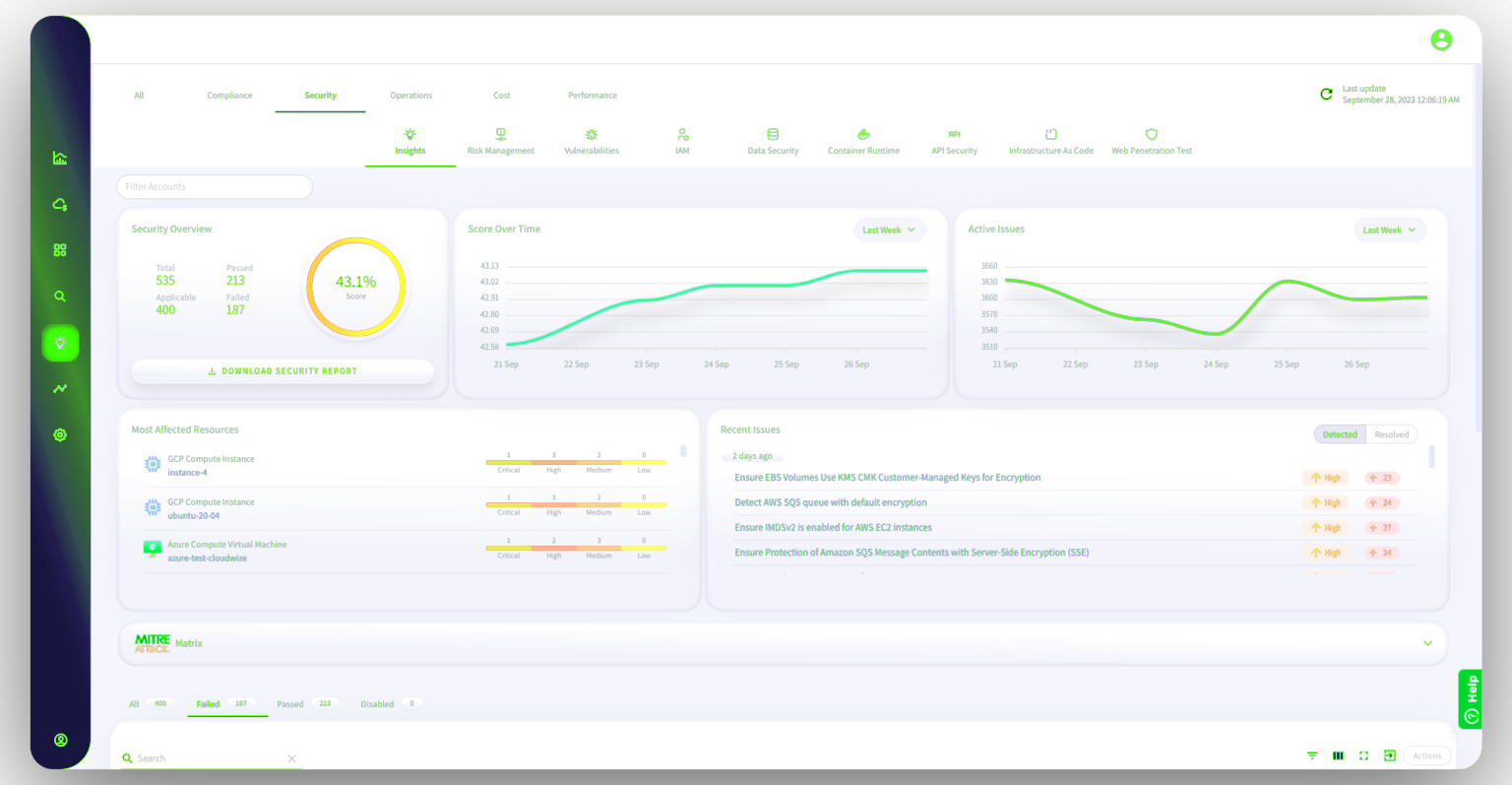
Overview
As your business grows and technology evolves, moving critical applications and processes to the cloud becomes essential. If your business is already leveraging various cloud-hosted applications, the next step is optimizing and fully migrating your operations to the cloud. Our Cloud Assessment service, powered by Risk Cognizance, provides a thorough evaluation of your current environment to develop a tailored strategy, ensuring your cloud migration is seamless, secure, and cost-effective.
Why Cloud Assessment is Crucial
A Cloud Readiness Assessment is a vital step for businesses considering a shift to cloud computing. It involves a detailed evaluation of your organization’s current IT infrastructure, applications, data, and employee skillsets. The goal is to determine how ready your business is for cloud adoption and to design an optimal cloud strategy that addresses your unique needs.
At its core, a Cloud Assessment goes beyond technical evaluation. It’s a holistic process that considers business objectives, compliance requirements, budget constraints, and stakeholder impacts. By critically examining your current setup, it identifies the feasibility, risks, and potential benefits of cloud migration, offering a strategic roadmap tailored to your business.

The Cloud Readiness Assessment: Four Key Phases
Our Cloud Readiness Assessment ensures your business is prepared for a smooth transition to cloud services through a structured four-phase approach:
- IT Landscape Overview (Evaluation Phase)
This initial phase involves a high-level evaluation of your existing IT infrastructure. We assess your technological readiness and compatibility with cloud environments and identify key business drivers and objectives that will guide your cloud adoption strategy. - Organizational Overview (Interview Phase)
We dive into the organization’s structure to evaluate the maturity levels of your technology, processes, and personnel. This phase maps out the potential business impacts of migrating to the cloud, ensuring all stakeholders understand the implications and opportunities of cloud adoption. - Market Comparison (Analysis Phase)
Leveraging data from previous phases, we benchmark your organization against the current market. This comparative analysis considers best practices and evaluates your readiness in the context of existing cloud solutions, helping you understand where you stand. - Initiating Change (Reporting Phase)
The final phase synthesizes all findings into actionable insights. We provide tailored recommendations for improvement and cloud adoption, laying out a clear and actionable roadmap for your organization’s cloud journey.
Enhanced Security with Risk Cognizance: A Comprehensive Cloud Security Platform
Our Cloud Readiness Assessment integrates Risk Cognizance a cloud security platform provided by Risk Cognizance, that ensures compliance with multiple international security standards, including ISO 27001 and ISO 27017. Risk Cognizance supports a broad range of other compliance standards, such as:
- HIPAA
- PCI DSS
- GDPR
- SOC2
- NIST
- APRA
- MAS
- FEDRAMP
- CIS
Key Features of Risk Cognizance :
Automatic Scanning
Risk Cognizance automatically scans environments for vulnerabilities and runs predefined rules, ensuring continuous security monitoring.
Auto-Remediation
The platform automatically remediates misconfigurations to patch vulnerabilities and remove the risk of exploitation, minimizing manual intervention.
Customizable Policies
Users can create and add their own policies and regulations using a drag-and-drop interface or code, providing flexibility in managing security and compliance requirements.
Web Application Penetration Testing
Risk Cognizance follows the OWASP Web Security Testing Guide to conduct automated penetration scans on web applications, identifying security gaps proactively.
Insights Dashboard
The Insights dashboard provides real-time visibility into cloud security and compliance coverage, including alerts, insights, and a detailed view of threats based on the MITRE ATT&CK framework.
Integrated Cloud Security Solutions
To ensure your cloud environment is comprehensively protected, we leverage industry-leading security solutions that cover multiple aspects of cloud security:
Cloud Native Application Protection Platform (CNAPP)
CNAPP secures cloud-native applications across their entire lifecycle. It provides end-to-end visibility and protection for applications, including source code, infrastructure, and runtime environments, ensuring vulnerabilities are managed before they can be exploited.
Cloud Security Posture Management (CSPM)
CSPM helps continuously monitor and manage your cloud security posture, identifying misconfigurations, compliance risks, and policy violations. It automates the identification and remediation of cloud vulnerabilities, aligning your security posture with industry standards.
Cloud Detection and Response (CDR)
CDR focuses on detecting, investigating, and responding to threats within your cloud environment. It provides advanced threat intelligence, behavioral analysis, and automated response capabilities, enabling rapid threat mitigation and reducing the impact of security incidents.
Cloud Workload Protection Platform (CWPP)
CWPP secures cloud workloads, including VMs, containers, and serverless functions, from runtime threats. It offers unified protection across hybrid and multi-cloud environments, combining vulnerability management, runtime protection, and compliance monitoring to safeguard your workloads.
Benefits of a Cloud Readiness Assessment
Conducting a Cloud Readiness Assessment is an investment in your business’s future scalability and agility. Here are the key benefits:
Aligned Business Strategy
Ensures your cloud strategy supports your overall business vision by aligning cloud goals with business objectives and prioritizing key technology initiatives.
Risk Mitigation
Identifies potential challenges early in the migration process, helping to address security, compliance, and governance issues proactively.
Cost Management and Optimization
Provides insights into current IT spending and expected cloud costs, helping to avoid unexpected expenses and identify opportunities for cost savings.
Resource and Capacity Planning
Assesses your resource needs and helps design a cloud environment that meets requirements without overprovisioning, ensuring efficient use of cloud resources.
Enhanced Performance and Scalability
Evaluates your existing applications and infrastructure, re-architecting solutions to leverage cloud performance and scalability benefits.
Competitive Advantage
Positions your business to fully harness the cloud’s potential, enabling faster deployment, innovation, and responsiveness to market changes.
Strategic Roadmap for Transformation
Outlines a phased approach to cloud adoption, reducing business disruptions and providing a clear path forward.
Empowered Decision-Making
Equips your leadership with the insights needed to make informed decisions about IT investments and the future technology direction of your company.
Cloud Readiness Assessment Checklist
To ensure a thorough evaluation, our Cloud Readiness Assessment includes a comprehensive checklist that covers critical focus areas:
- Strategic Alignment: Define business objectives for cloud adoption, ensure alignment with overall strategy, and select appropriate cloud approaches (Public, Private, Multi-Cloud).
- Technology and Infrastructure: Catalog current IT assets, assess application suitability for cloud, and evaluate any re-architecting needs.
- Security and Compliance: Identify relevant regulations, assess security posture, and plan for cloud-specific security and compliance measures.
- Financial Analysis: Analyze current and projected IT expenditures, including migration and operational costs, to identify cost savings.
- Organizational Readiness: Evaluate skill levels, plan training needs, and communicate cloud strategy to gain stakeholder buy-in.
- Operational Impact: Assess the impact on existing IT operations, plan for integration with on-premise systems, and establish performance metrics.
- Migration Planning: Develop phased migration plans, prioritize applications, and create disaster recovery and backup strategies.
- Vendor and Service Selection: Evaluate potential cloud service providers and compare service level agreements (SLAs).
Cloud Readiness Assessment Tools
We use a range of tools to streamline the Cloud Readiness Assessment process, providing critical insights through analytics and reporting:
- AWS Migration Evaluator: Offers a cost-benefit analysis for moving to AWS.
- Microsoft Cloud Adoption Strategy Evaluator: Assesses your cloud strategy and provides recommendations for building a cloud business case.
- IBM Turbonomic: Provides AI-powered workload automation to assure application performance while minimizing costs.
- Dynatrace: Offers full-stack monitoring with AI-assisted analytics for cloud infrastructure.
